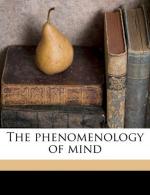|
This section contains 497 words (approx. 2 pages at 400 words per page) |

|
Dissemblance Summary and Analysis
Hegel opens the chapter by referring to the spiritually complete individual. As espoused previously, for Hegel, the spiritual life and the day-to-day world take place together. The two are inseparable. Customarily he has also shown consciousness and the external world to be in such union but he also acknowledges that mind as such, if not also mind as spirit, has a capacity to function in ways that do not so directly touch or interact with facts of the world in a cause-effect manner.
Self-consciousness, Hegel, informs readers, has contradiction and dilemma in the case where it strives to manifest morality. He refers to diverse ethical notions and activities or tendencies to action, some of which have no clear systematic relation to one another. A side effect is that psychologically, the moral consciousness is an amalgam of inconsistencies. These are the source...
(read more from the Dissemblance Summary)
|
This section contains 497 words (approx. 2 pages at 400 words per page) |

|




